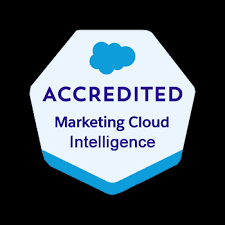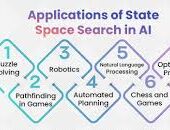In the current age of digital transformation, effective data migration is essential, especially as cloud adoption accelerates.
Research from Foundry reveals that 63% of IT leaders have increased their cloud migrations, but 90% face challenges—primarily budgetary constraints.
This highlights the importance of thoughtful planning and strategic execution.
In this context, we’ll explore the significance of successful Salesforce data migration and present a nine-step roadmap to ensure a seamless transition. Additionally, we’ll cover solutions for data preparation and the top five Salesforce data migration tools that can help turn migration challenges into growth opportunities.
Salesforce Data Migration Checklist
Download our e-book to quickly and efficiently migrate data from Excel spreadsheets and CRM systems to Salesforce.
Why is Data Migration Important?
In 2010, I bought my first smartphone and struggled to transfer data from my outdated phone. My contacts were vital, but the old phone lacked proper data transfer options. Determined not to re-enter everything manually, I searched for a solution. Eventually, I found a method to extract data into a CSV file, which I converted to vCard format to transfer successfully.
This experience reinforced how essential data migration is—not only for businesses but also for everyday situations.
For organizations looking to modernize, data migration is a crucial step in upgrading IT infrastructure. It enables smooth transitions from legacy systems to modern platforms like Salesforce, enhancing efficiency, scalability, and data accessibility.
Effective data migration improves data management, reduces costs tied to outdated systems, and supports better decision-making through improved analytics. It also ensures data integrity and security, aligning IT capabilities with evolving business needs, fostering innovation, and keeping a competitive edge.
What is Data Migration in Salesforce?
Whether you are already using Salesforce or considering adoption, one common question arises: “How do I migrate my data to Salesforce?”
Salesforce data migration involves moving information from external systems like legacy CRMs or local databases into Salesforce.
This process is critical not only for protecting data integrity but also for enabling better decision-making, improving customer service, and promoting organizational growth.
A well-planned data migration strategy ensures a smooth transition to Salesforce, maximizing its potential and enhancing business efficiency.
9-Step Salesforce Data Migration Plan
Preparing for a Salesforce data migration? Follow these nine essential steps for a seamless process:
- Back Up Data
Always back up your existing data before starting a migration to prevent loss or corruption. - Define Objectives
Clarify whether you need to create new records, update existing ones, or both. Identify the data types—such as Accounts, Contacts, or custom objects—that need to be migrated. - Assess Current Data
Audit your data to eliminate duplicates, inconsistencies, or outdated information, ensuring higher quality during the migration. - Choose Migration Tools
For smaller migrations (up to 50,000 records per object), the Data Import Wizard is simple and easy to use. For larger migrations, Data Loader or third-party ETL tools like KingswaySoft’s SSIS Integration Toolkit may be necessary. - Map Data Fields
Map source fields to Salesforce fields, ensuring any necessary data conversions (e.g., date formats) are handled smoothly. - Cleanse Data
Before migrating, clean your data to remove duplicates and correct errors, ensuring data integrity. - Test Data Migration
Conduct a test migration with a smaller data subset to catch any issues before the full-scale process. - Execute Data Migration
Schedule migrations during off-peak times to minimize disruptions, and monitor the process closely. - Ensure Post-Migration Validation
After migration, validate that all data has been accurately transferred. Use Salesforce reporting to check data consistency and relationships between objects.
Need Help with Data Migration to Salesforce?
We offer consulting services to guide you through the data migration process, from auditing data sources to executing the migration strategy. Tectonic is here to help.
Top 5 Salesforce Data Migration Tools
Here’s a quick comparison of five Salesforce data migration tools to help you choose the right solution:
- Salesforce Data Import Wizard
- Best for small-to-medium migrations
- Supports importing into both standard and custom objects
- Intuitive interface and pre-import error checking
- Salesforce Data Loader
- Handles up to 5,000,000 records
- Supports custom objects and bulk data operations
- Generates CSV logs for auditing
- JitterBit Data Loader
- Integrates AI and API capabilities
- Supports complex operations like upsert, query, and bulk load
- Best for short ad-hoc tasks
- Dataloader.io
- Cloud-based tool ideal for dynamic environments
- Supports scheduling jobs, auto-mapping, and audit history
- No volume restrictions
- SSIS Integration Toolkit by KingswaySoft
- Processes large data volumes
- Best for complex integrations across diverse data sources
- User-friendly but may require customization
For hassle-free data migration, reach out to Tectonic for a tailored plan that minimizes downtime and maximizes operational efficiency.













